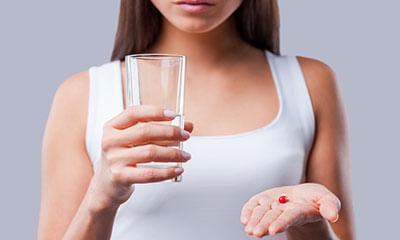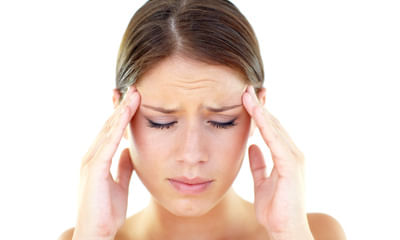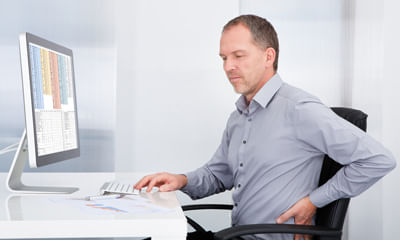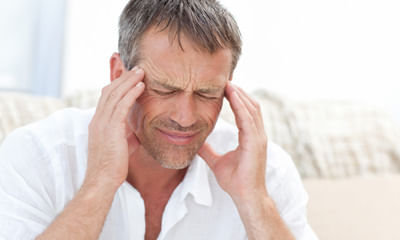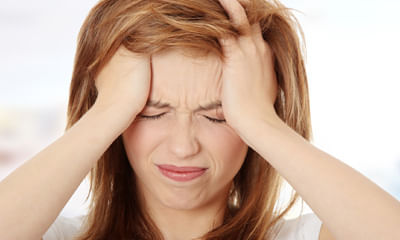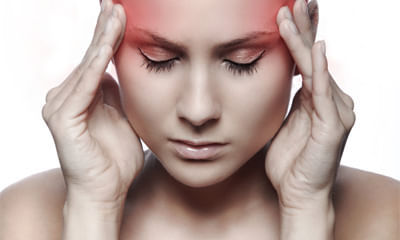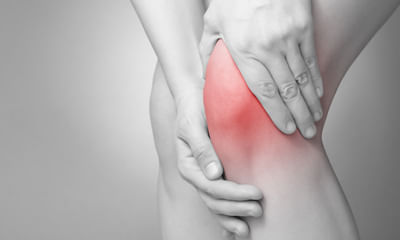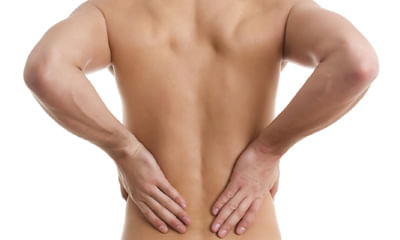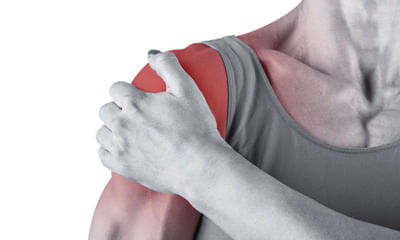Side Effect Of Nimesulide
My doctor suggests me to to take sumo nimesulide and paracetamol tablets. Just want to know how to take them. ...
Ask Free Question
Sumo tablet should be taken with food to prevent stomach upset. Swallow it as a whole. Do not chew, crush or break it. Take the same amount of dose advised by your doctor and do not use it for a longer period than recommended by the doctor. Also avoid consuming alcohol when taking this medicine.
When I have headaches then which medicine should I prefer from dicloroform and paracetamol or nimesulide and paracetamol ...
Ask Free Question
It can be because of many reason from simple reasons like not sleeping on time or sleeping too much, stress, have long hours of fasting, dehydration to causes like sinusitis, migraine, high blood pressure, tumor etc. Do this 1. Take adequate night sleep 2. Eat at regular intervals. As starvation/gas can trigger headache 3. Avoid things that can trigger headache. Common triggers include alcohol, caffeine or poor sleep. Inculcate good sleep practices like having a regular bedtime schedule and avoiding naps, caffeine and tv before bedtime. 4. Don't take stress- pursue an enjoyable activity or verbalising frustration to reduce stress and improve mental health. 5. Avoid foods that you know triggers your headache. 6. Hot packs and heating pads can relax tense muscles. Warm showers or baths may have a similar effect 7. Drink water. âdehydration can be a big cause of headaches,â for this homeopathic treatment is very effectivefor more details you can consult me.
will just give you a brief history. From the last 2 days I am experiencing lower back pain or pelvic pain. Initially the ...
Ask Free Question
Hello Mr. lybrate-user your symptoms and history concludes to a diagnosis of pivd for this you will need a x-ray dorsal lumbar spine to r/o pivd, straight back, ankylosing spondylitis (rare possibility). Till the time you can start tab flexura d twice a day for 3 days for pain and spasm relief. Exercise is not indicated while there is pain.
I have used nicip plain tablets for headache related hang over last three years around 100 tablets it will be leads to l ...
Ask Free Question
Headache if becomes chronic needs to be evaluated. You need to give me a detailed history of your headache. Nicip is not recommended onna daily basis but can be taken sos. Feel free to call for further details.
She is having headache more than twice a week, ct scan done, no disease diagnose. She can't control until she use nimesu ...
Ask Free Question
It can be because of many reason from simple reasons like not sleeping on time or sleeping too much, stress, have long hours of fasting, stress, dehydration to causes like sinusitis, migraine, high blood pressure, tumor etc. Do this 1. Take adequate night sleep 2. Eat at regular intervals. As starvation/gas can trigger headache 3. Avoid things that can trigger headache. Common triggers include alcohol, caffeine or poor sleep. Inculcate good sleep practices like having a regular bedtime schedule and avoiding naps, caffeine and tv before bedtime. 4. Don't take stress- pursue an enjoyable activity or verbalising frustration to reduce stress and improve mental health. 5. Avoid foods that you know triggers your headache. 6. Hot packs and heating pads can relax tense muscles. Warm showers or baths may have a similar effect 7. Drink water. “dehydration can be a big cause of headaches,” for this homeopathic treatment is very effectivefor more details you can consult me.
I am suffering from severe headache almost everyday and used to eat a lot of painkillers like nimesulide, saridon, combi ...
Ask Free Question
Yes it can be migraine. But I need details of case to be sure. Do this 1. Take adequate night sleep 2. Eat at regular intervals. As starvation/gas can trigger headache 3. Avoid things that can trigger headache. Common triggers include alcohol, caffeine or poor sleep. Inculcate good sleep practices like having a regular bedtime schedule and avoiding naps, caffeine and tv before bedtime. 4. Don't take stress- pursue an enjoyable activity or verbalising frustration to reduce stress and improve mental health. 5. Avoid foods that you know triggers your headache. 6. Hot packs and heating pads can relax tense muscles. Warm showers or baths may have a similar effect 7. Drink water. “dehydration can be a big cause of headaches,” for this homeopathic treatment is very effectivefor more details you can consult me.
Im suffering from severe headache almost everyday and use to eat a lot of pain killers like nimesulide, saridon, combife ...
Ask Free Question
It may not be related to eye problem. Do this 1. Take adequate night sleep 2. Eat at regular intervals. As starvation/gas can trigger headache 3. Avoid things that can trigger headache. Common triggers include alcohol, caffeine or poor sleep. Inculcate good sleep practices like having a regular bedtime schedule and avoiding naps, caffeine and tv before bedtime. 4. Don't take stress- pursue an enjoyable activity or verbalising frustration to reduce stress and improve mental health. 5. Avoid foods that you know triggers your headache. 6. Hot packs and heating pads can relax tense muscles. Warm showers or baths may have a similar effect 7. Drink water. “dehydration can be a big cause of headaches,” for this homeopathic treatment is very effectivefor more details you can consult me.
Myself 64 years old lady operated for Rt Knee joint replacement on 26th Nov. 2018. Discharged from on 30th Nov. 2018.Doc ...
Ask Free Question
Simple Knee ExerciesSpecific knee exercises will also help ie. Keeping ball underneath the knee and keep pressing it. That's the simple exercise which will help you to strengthen the knee Ice therapy would definitely help to reduce the inflammation. We also advise you to use knee cap which would help to prevent the knee from damaging further and also to maintain the quadriceps muscle tone. I also advise you to use knee cap which would help to prevent the knee from damaging further and also to maintain the quadriceps muscle tone. Knee pain more than 2 weeks:if your knee is paining since 2 weeks, then you have to rethink whether you had any injury in the previous years. I also advise you to use knee cap which would help to prevent the knee from damaging further and also to maintain the quadriceps muscle tone. As arthritis is very common if anyone would've neglected any injury in the previous years. You can take Ultrasonic therapy in one of the nearby physiotherapy clinics which would help to heal the damaged cartilages along with shortwave diathermy which would help to improve the blood circulation. Ice therapy would definitely help to reduce the inflammation. You may do all of these exercises right away. It’s important to stretch the muscles in the back and on the side of your leg. It is also important to strengthen the muscles in your hip and on the top of your thigh so your kneecap won't dislocate again. •Standing hamstring stretch: Put the heel of the leg on your injured side on a stool about 15 inches high. Keep your leg straight. Lean forward, bending at the hips, until you feel a mild stretch in the back of your thigh. Make sure you don't roll your shoulders or bend at the waist when doing this or you will stretch your lower back instead of your leg. Hold the stretch for 15 to 30 seconds. Repeat 3 times. •Quad sets: Sit on the floor with your injured leg straight and your other leg bent. Press the back of the knee of your injured leg against the floor by tightening the muscles on the top of your thigh. Hold this position 10 seconds. Relax. Do 2 sets of 15. •Straight leg raise: Lie on your back with your legs straight out in front of you. Bend the knee on your uninjured side and place the foot flat on the floor. Tighten the thigh muscle on your injured side and lift your leg about 8 inches off the floor. Keep your leg straight and your thigh muscle tight. Slowly lower your leg back down to the floor. Do 2 sets of 15. •Side-lying leg lift: Lie on your uninjured side. Tighten the front thigh muscles on your injured leg and lift that leg 8 to 10 inches (20 to 25 centimeters) away from the other leg. Keep the leg straight and lower it slowly. Do 2 sets of 15. •Prone hip extension: Lie on your stomach with your legs straight out behind you. Fold your arms under your head and rest your head on your arms. Draw your belly button in towards your spine and tighten your abdominal muscles. Tighten the buttocks and thigh muscles of the leg on your injured side and lift the leg off the floor about 8 inches. Keep your leg straight. Hold for 5 seconds. Then lower your leg and relax. Do 2 sets of 15. •Step-up: Stand with the foot of your injured leg on a support 3 to 5 inches (8 to 13 centimeters) high --like a small step or block of wood. Keep your other foot flat on the floor. Shift your weight onto the injured leg on the support. Straighten your injured leg as the other leg comes off the floor. Return to the starting position by bending your injured leg and slowly lowering your uninjured leg back to the floor. Do 2 sets of 15. •Wall squat with a ball: Stand with your back, shoulders, and head against a wall. Look straight ahead. Keep your shoulders relaxed and your feet 3 feet (90 centimeters) from the wall and shoulder's width apart. Place a soccer or basketball-sized ball behind your back. Keeping your back against the wall, slowly squat down to a 45-degree angle. Your thighs will not yet be parallel to the floor. Hold this position for 10 seconds and then slowly slide back up the wall. Repeat 10 times. Build up to 2 sets of 15. •Knee stabilization: Wrap a piece of elastic tubing around the ankle of your uninjured leg. Tie a knot in the other end of the tubing and close it in a door at about ankle height. •Stand facing the door on the leg without tubing (your injured leg) and bend your knee slightly, keeping your thigh muscles tight. Stay in this position while you move the leg with the tubing (the uninjured leg) straight back behind you. Do 2 sets of 15. •Turn 90 degrees so the leg without tubing is closest to the door. Move the leg with tubing away from your body. Do 2 sets of 15. •Turn 90 degrees again so your back is to the door. Move the leg with tubing straight out in front of you. Do 2 sets of 15. •Turn your body 90 degrees again so the leg with tubing is closest to the door. Move the leg with tubing across your body. Do 2 sets of 15. Hold onto a chair if you need help balancing. This exercise can be made more challenging by standing on a firm pillow or foam mat while you move the leg with tubing. •Resisted terminal knee extension: Make a loop with a piece of elastic tubing by tying a knot in both ends. Close the knot in a door at knee height. Step into the loop with your injured leg so the tubing is around the back of your knee. Lift the other foot off the ground and hold onto a chair for balance, if needed. Bend the knee with tubing about 45 degrees. Slowly straighten your leg, keeping your thigh muscle tight as you do this. Repeat 15 times. Do 2 sets of 15. If you need an easier way to do this, stand on both legs for better support while you do the exercise. •Standing calf stretch: Stand facing a wall with your hands on the wall at about eye level. Keep your injured leg back with your heel on the floor. Keep the other leg forward with the knee bent. Turn your back foot slightly inward (as if you were pigeon-toed). Slowly lean into the wall until you feel a stretch in the back of your calf. Hold the stretch for 15 to 30 seconds. Return to the starting position. Repeat 3 times. Do this exercise several times each day. •Clam exercise: Lie on your uninjured side with your hips and knees bent and feet together. Slowly raise your top leg toward the ceiling while keeping your heels touching each other. Hold for 2 seconds and lower slowly. Do 2 sets of 15 repetitions. •Iliotibial band stretch, side-bending: Cross one leg in front of the other leg and lean in the opposite direction from the front leg. Reach the arm on the side of the back leg over your head while you do this. Hold this position for 15 to 30 seconds. Return to the starting position. Repeat 3 times and then switch legs and repeat the exercise.
1 year back my father 58 age already faced brain stroke and we took him to the hospital nd he was well but now he is fac ...
Ask Free Question
Hello Nazim... Nice is having nimesulide... which has many side effects.. like kideny failure... Better consult and give homoeopathic treatment.
Can I take tablet diclofenac sodium and paracetamol with nimesulide 100 mg at same time? ...
Ask Free Question
No you should not .. Never take any medication like it.. It can fail your kidneys and then even after spending lakhs of rupees you will not be able to get the cure .

